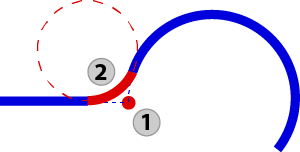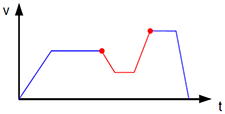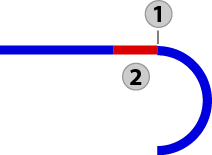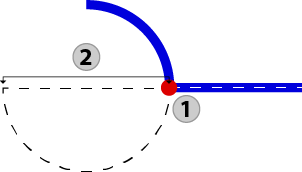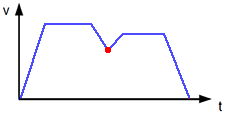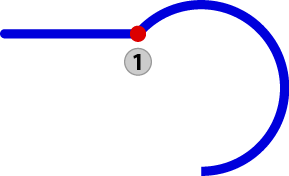Line-to-Arc and Arc-to-Line Transitions
With this transition mode, the linear move is shortened when one move is linear and the other is circular. The amount is specified by the corner distance. A circular arc connects the two moves (except as noted below), allowing for a smooth transition (see n-Degree Transition below). The circular arc that connects the two moves derives its velocity from the transition parameter and the acceleration and deceleration values are derived from the next move.
-
-
There are three special cases for Line-to-Arc and Arc-to-Line transitions:
- Tangent transitions:
The linear move will be shortened by the corner distance and a linear transition move will be inserted to cover the distance that was removed. - Intersection transitions:
This will only when the arc intersects the line corner distance away from the point where the line and the arc meet. The transition move will be zero distance.
If the buffer mode is "Buffered" then the path velocity will go to zero. All other buffer modes may cause a large acceleration and jerk In physics, jerk is the rate of change of acceleration; more precisely, the derivative of acceleration with respect to time.
In physics, jerk is the rate of change of acceleration; more precisely, the derivative of acceleration with respect to time. - Zero-distance transitions:
A zero distance transition move will be inserted, which will only affect blending.
If the buffer mode is "Buffered" then the path velocity will go to zero. All other buffer modes may cause a large acceleration and jerk.
- Tangent transitions:
